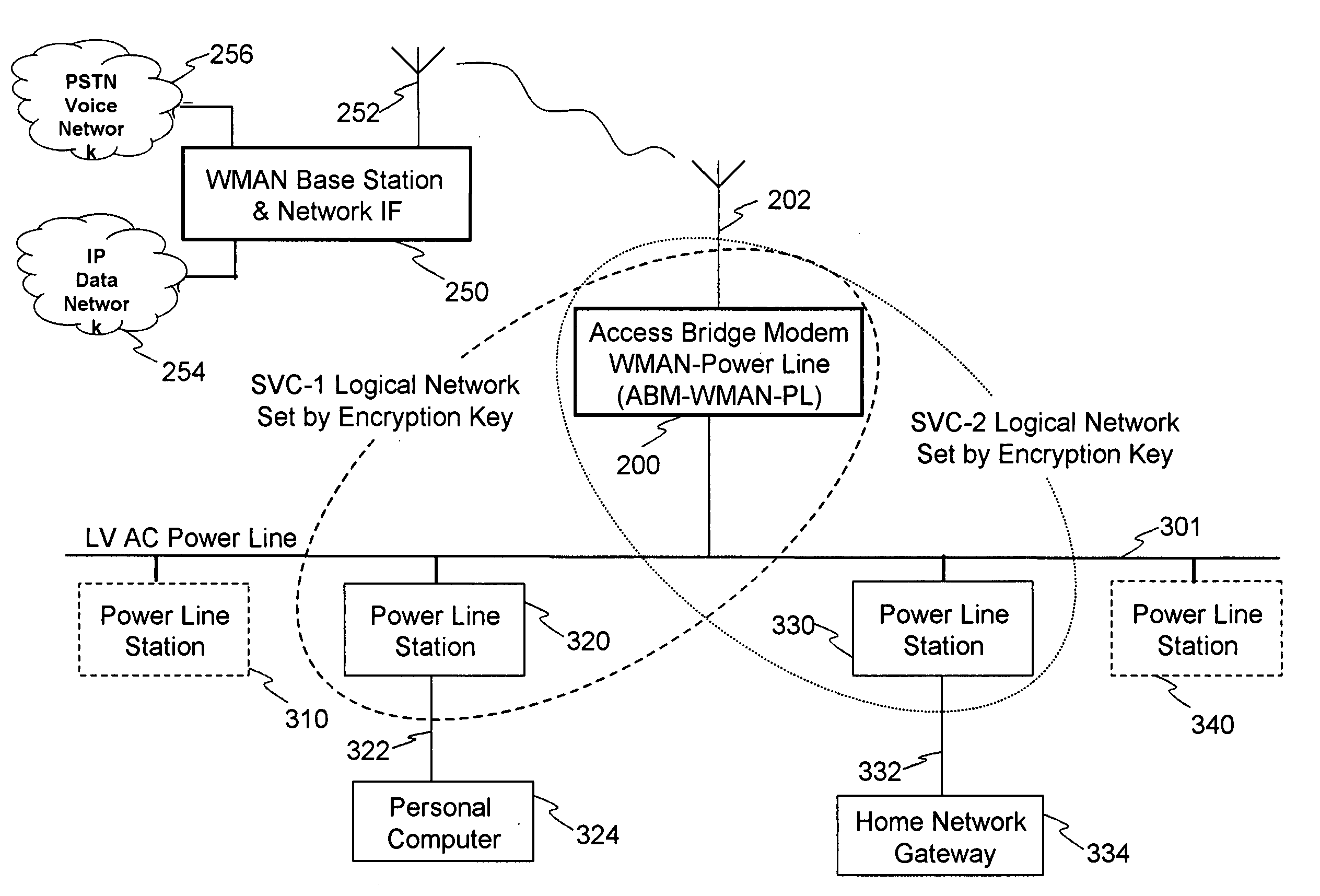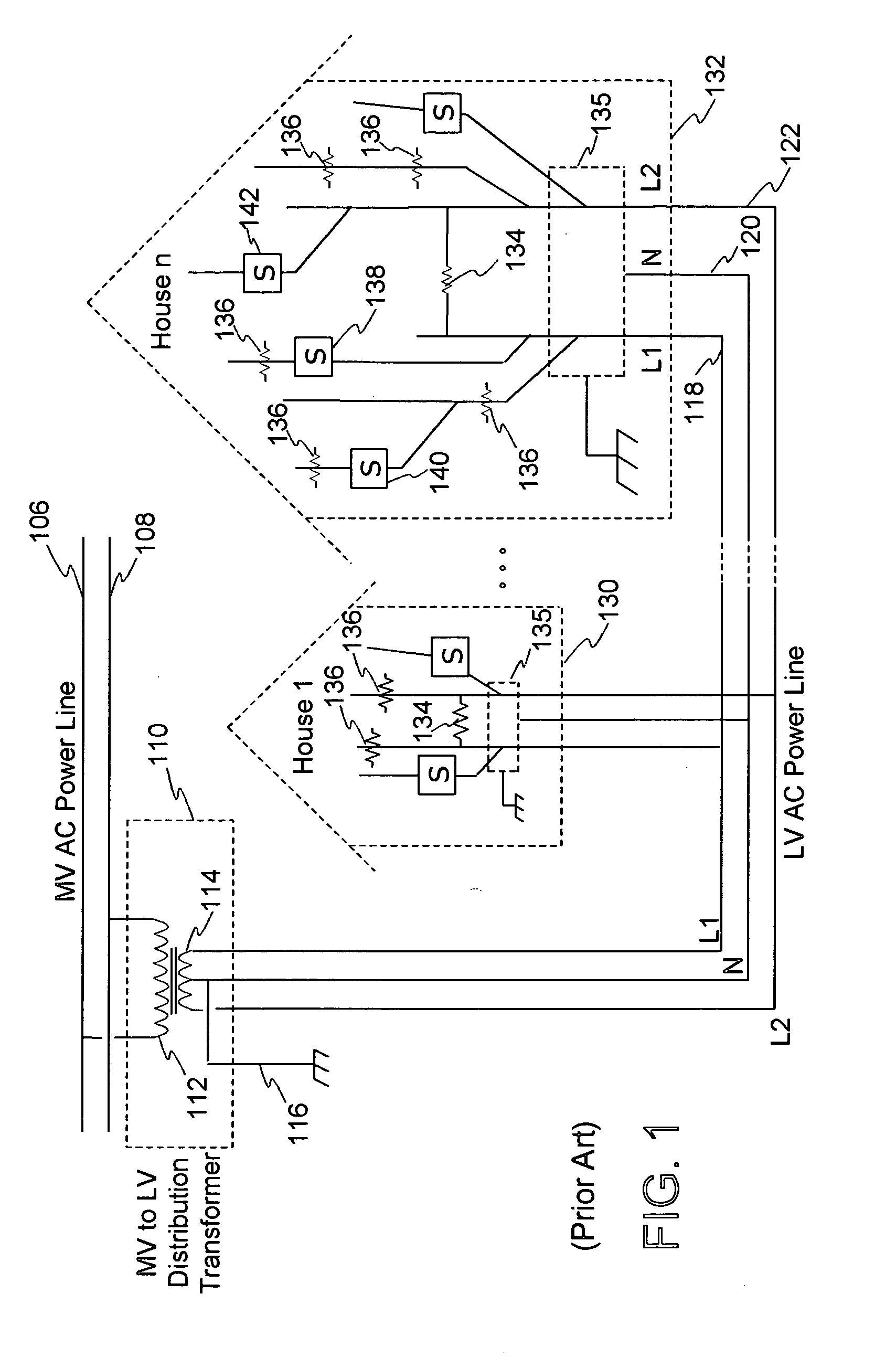Method and apparatus for providing broadband wireless access services using the low voltage power line
- Summary
- Abstract
- Description
- Claims
- Application Information
AI Technical Summary
Benefits of technology
Problems solved by technology
Method used
Image
Examples
Embodiment Construction
[0008] In the following description, like numbers refer to like elements.
[0009] In the following description, a dual-medium bridge modem—one medium being free space and the other medium being the low-voltage power line—is used to connect a power line network to a fixed (antenna) broadband wireless access network. “Low voltage” in this context means the voltage presented to the ultimate utility power consumer, e.g., in the United States (US) the 115 volts alternating current (AC) at household or office wall sockets. This dual-medium bridge modem will also be referred to herein as an access bridge modem (ABM) for wireless metropolitan area networks (WMAN) and power line (PL) networks, or ABM-WMAN-PL for short.
[0010] A dual medium bridge for wireless metropolitan area network and a power line network has at least two physical or signaling interfaces: one for free space and one for wireline. Each interface has associated with it a media access controller (MAC) for communicating over t...
PUM
 Login to View More
Login to View More Abstract
Description
Claims
Application Information
 Login to View More
Login to View More - R&D
- Intellectual Property
- Life Sciences
- Materials
- Tech Scout
- Unparalleled Data Quality
- Higher Quality Content
- 60% Fewer Hallucinations
Browse by: Latest US Patents, China's latest patents, Technical Efficacy Thesaurus, Application Domain, Technology Topic, Popular Technical Reports.
© 2025 PatSnap. All rights reserved.Legal|Privacy policy|Modern Slavery Act Transparency Statement|Sitemap|About US| Contact US: help@patsnap.com



